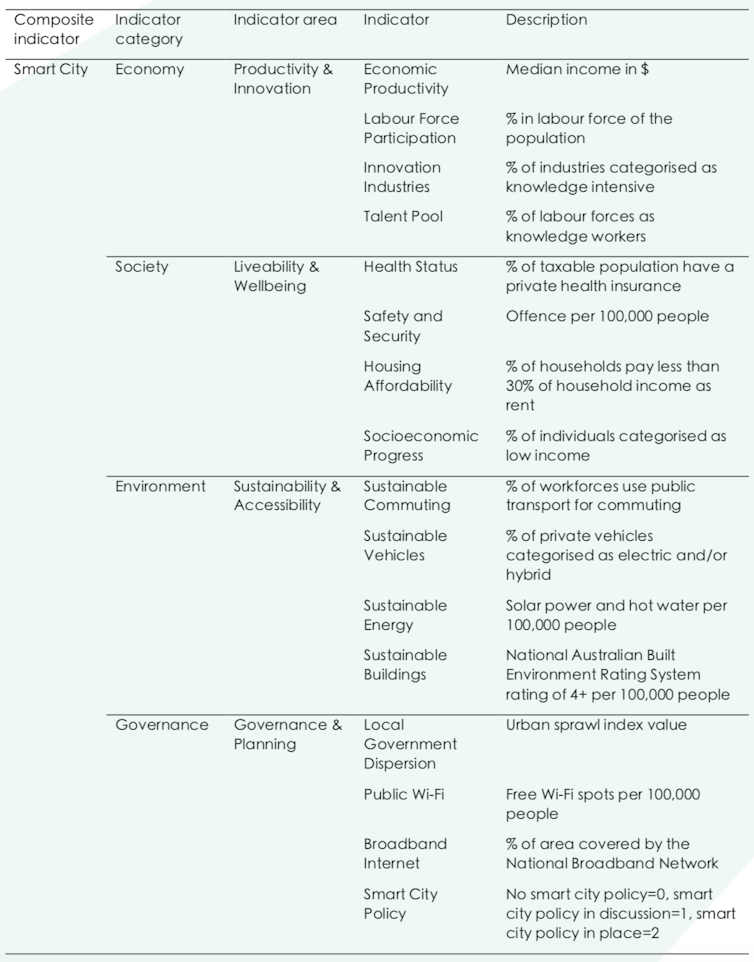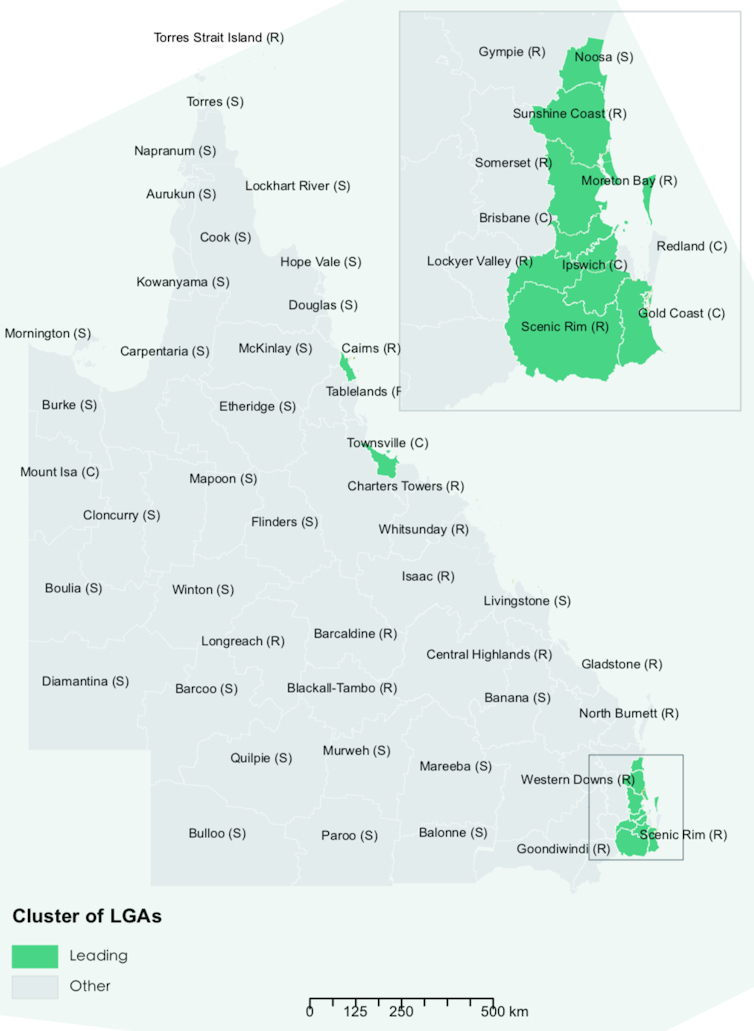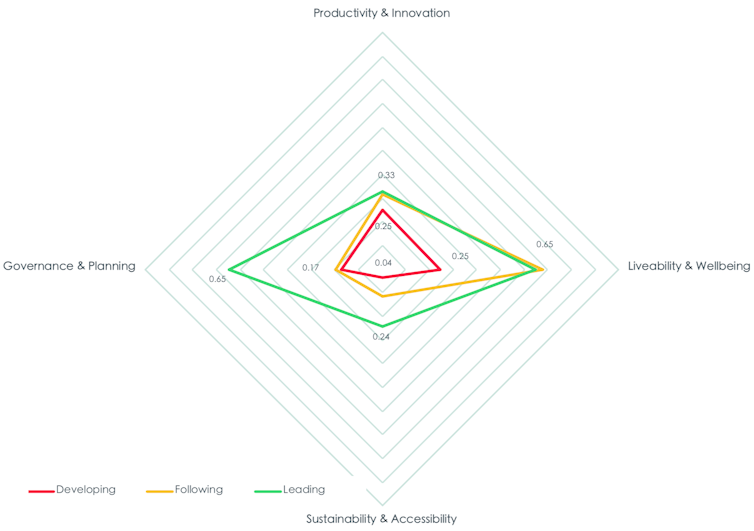Just how ‘city smart’ are local governments in Queensland?
GUEST OBSERVATION
Many places around the world claim to be a “smart city”, but what that means is often unclear. A smart city is widely seen as an urban area that uses technology to enhance performance and the quality of its services. In other words, it’s a happy marriage of technology and the city.
Before we look at what is being planned in Australia and what is being done overseas, an important question is: How smart are our cities now? The answer enables our cities to benchmark where we are now and then track progress over time. We recently conducted a study to evaluate the smartness of all local government areas in Queensland.
Queensland and Australian cities are responding to a global trend, with the Australian government releasing a Smart Cities Plan in 2016.
A snapshot of Australian initiatives in 2017 revealed over a dozen local governments had strongly embraced the smart city agenda. A couple of dozen are finalising strategies. More than 100 are considering undertaking a smart city journey.
Smart city has become a global city planning movement and received enormous policy and media attention. Well over 250 smart city projects are under way in 178 cities around the world.
India alone hosts 100 of those initiatives. Songdo in South Korea is recognised as the most advanced smart city in the making.
The focus of smart city projects is to increase their city’s “smartness” through advanced technologies such as sensors, internet of things, data analytics, and networks. However, technology adoption alone does not make an urban area smart. A city needs a healthy mix of human, social, infrastructural, cultural, environmental, financial, knowledge, symbolic and relational assets or capital to be smart.
Taking a holistic view of smart cities helps us understand what is sustainable over time and what is not. An example of a holistic smart city framework is shown below.

Sustainable smart city conceptual framework. Authors' own work
Measuring urban smartness performance
Local governments across the country have started to develop, or search for ways to develop, smart city strategies and solutions. Our research in Queensland based its analysis on four smart city indicator categories and 16 smartness indicators. The table below shows these.

Indicators of the assessment framework. Authors' own work
We then categorised the smartness levels of the 78 local government areas in the three performance clusters: leading, following, and developing.
The study results revealed a mixed performance across Queensland. The figure below shows this, with higher smart city performance in metropolitan Southeast Queensland and some major regional urban centres.
Of 78 local government areas, only ten stood out as high performing. These are: Brisbane, Sunshine Coast, Cairns, Logan, Ipswich, Townsville, Moreton Bay, Gold Coast, Noosa and Scenic Rim.

Performance of local government areas, with the ten leading areas shown in green. Authors' own work
The performances of these cities differ significantly in the four dimensional measures considered. These are:
- productivity and innovation
- liveability and well-being
- sustainability and accessibility
- governance and planning.
In general, Queensland local government areas perform more strongly in liveability and well-being, and governance and planning. Performance is rather weak across the state in productivity and innovation, and sustainability and accessibility.
Where is Queensland doing well, and why?
We can draw some insights from the findings. For example, good performances on liveability and well-being might be a result of relatively positive health, safety, housing and social conditions. A cost-of-living study found that Queensland is the most affordable Australian state when it comes to everyday expenses including rent, fuel, groceries, transport, utilities and education.
Similarly, the performance on governance and planning is relatively high across the state. This is most likely due to effective strategic development planning practice.
In some local governments, the policy focus includes smart city strategies. For example, about 15 cities in Queensland have recently developed their smart city strategies. Some have already incorporated these in their planning and development mechanisms. Brisbane, Ipswich, Sunshine Coast and Townsville are among those.
And why the struggle on other measures?
The study identified barriers to achieving urban smartness in Queensland.
The poor performance on productivity and innovation indicators may be a result of the state not being a notable contributor to the global knowledge and innovation economy. Fostering, attracting and retaining innovation industries and talented knowledge workers has been a major challenge for all urban localities in Queensland. State government efforts to advance Queensland in the global knowledge and innovation economy need sustained reinforcement to achieve this goal.
The weaker performance on sustainability and accessibility indicators relates to the lower level of adoption of sustainable solutions in energy, buildings, commuting and vehicles. While investing in technology is one approach to these challenges, societal behavioural change is also required.
Recent studies of Australian and UK cities revealed that technology uptake by citizens and cities does not necessarily lead to sustainable commuting patterns and urban outcomes. Hence, searching for solutions beyond technology adoption is critical for cities — particularly when the evident risks of climate change in Queensland are considered.
Ways to improve urban smartness
We found major regional disparities in Queensland. Along with much-needed state government investment and support, perhaps an expansion of Commonwealth funding and programs, particularly to regional cities, could help narrow the gap. The diagram below illustrates the current gap in the four performance categories.

Comparison of performance categories. Authors' own work
The Commonwealth City Deals and Smart Cities and Suburbs programs might be an opportunity to consolidate existing smart city efforts in Queensland’s top-performing cities.
We argue that a smart city should be seen as more than a marriage of technology and the city. Firstly, the technocentric approach takes its toll on the environment.
Secondly, it prioritises technology-based quick fixes, while neglecting deeper solutions that have nothing to do with the technology.
We advocate a smart city to be seen as
"an urban locality functioning as a healthy system of systems with sustainable and balanced practices of economic, societal, environmental and governance activities generating desired outcomes and futures for all humans and non-humans."
There is a demonstrated need for smart city projects to generate a range of desired outcomes – economic, societal, environmental and governance – in a sustainable, balanced and inclusive manner. An integrated, holistic approach is the way forward in Queensland and across Australia.
Tan Yigitcanlar, Associate Professor of Urban Planning and Development, Queensland University of Technology
Laurie Buys, Professor, Creative Industries Faculty, Queensland University of Technology
Md. (Liton) Kamruzzaman, Associate professor of Urban Planning, Monash University
This article is republished from The Conversation under a Creative Commons license. Read the original article.
